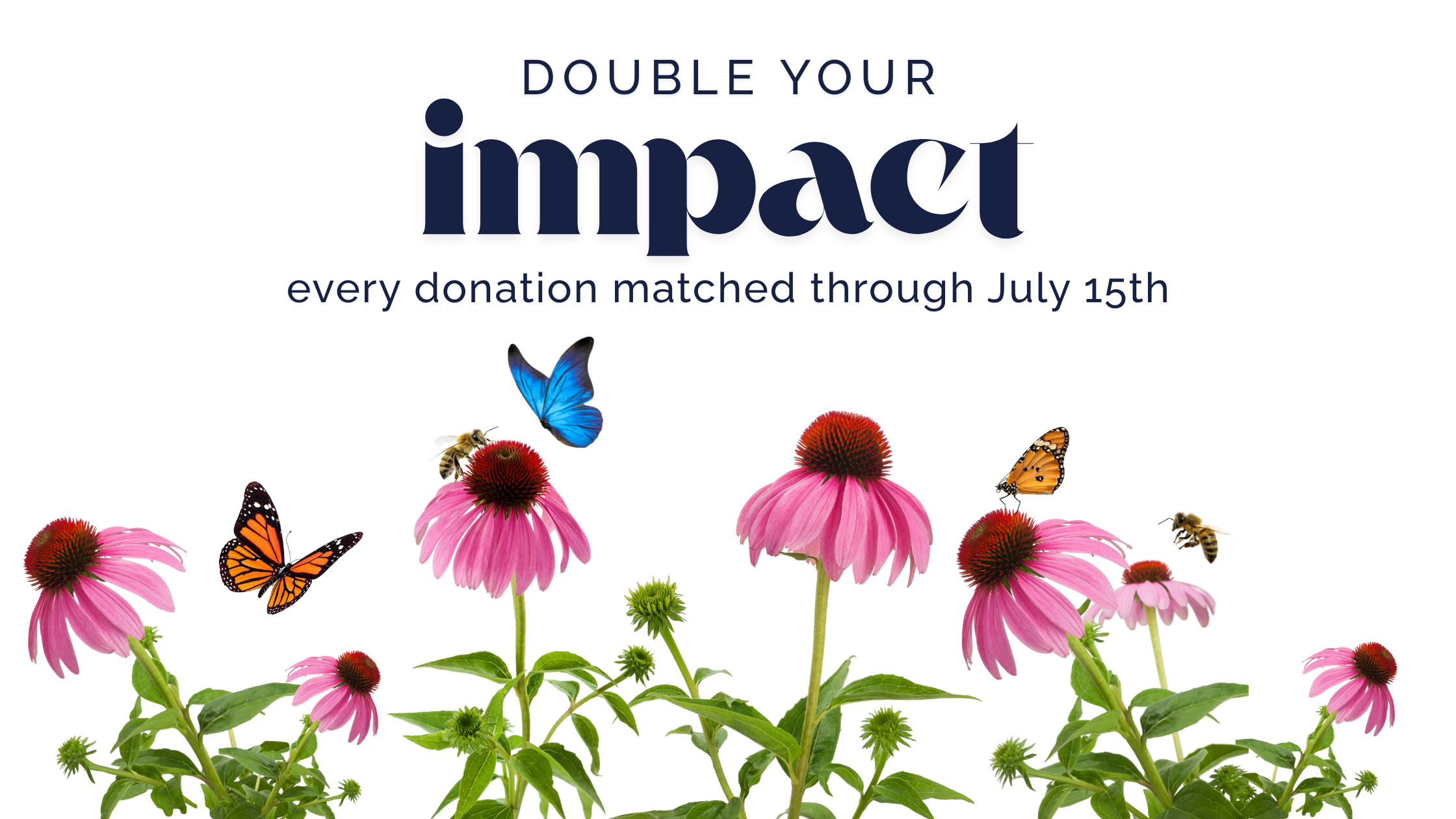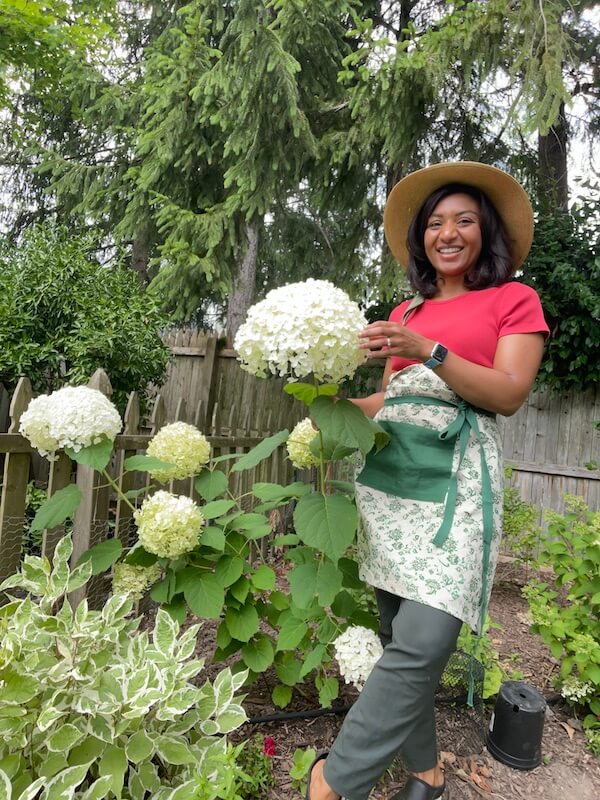
Meet Jess Atkins, Princeton-area homeowner and self-taught gardener. Jess has been gardening for five years and recently shared her experiences in gardening as well as tips and tricks for new gardeners.
What interested you in gardening? Why is it important to you?
When we moved to our house, the yard looked awful. We had problems with standing water after rainstorms, and a lot of threadbare shrubs that were being smothered by ivy. I wanted to fix both of those things, especially since my parents always had a gorgeous yard. People used to stop and ask about it – I wanted that too. Buying a house was a huge personal achievement for both me and my husband, and I wanted it to reflect my love for it. I also want a beautiful, functional space where I can play with the dog, eat dinner, and read. Gardening is very therapeutic to me, it’s great stress relief to spend time outside with plants.
How long have you been gardening?
Before moving to my house, I used to grow flowers in containers on my apartment patio, but I wasn’t serious until I had my own yard. I’ve been gardening in a major way for five years now.
How do you choose what to plant?
I choose plants that I think are beautiful, and provide some kind of function like feeding birds. I start with the look I want, and then I try to find a North American native alternative when I can. When I can’t find a native version, I’m careful not to introduce anything invasive. To double check, I always Google the name of the plant and “invasive,” “how to get rid of,” and “problems.” If the plant has a tendency to be too aggressive, I try to find out before I buy it.
I’m really concerned about plants that take over the garden because I’ve had to deal with plants that were too vigorous, and created a lot of work with little reward. Forsythia, English ivy, and vinca have all given me headaches. Most of my yard had those three plants when I moved in, and it felt like they were always growing over the stairs, smothering shrubs, going under siding, etc. They grew like crazy, but somehow always looked unhealthy. It was awful, so we took it all out.
I also learned plants can be problem solvers and still look beautiful. Our yard used to have a lot of standing water after it rained, so we established a thick lawn and planted a Sweet Bay magnolia tree, which is native to NJ. It turns out grass is great for absorbing excess rain water and the magnolia thrives in wet conditions. The grass looks great and the tree has huge flowers in the late spring that turn into fruit that the birds love. I get a beautiful lawn, visiting birds, a flowering tree and no standing water! You can mold your garden to your own needs.
What tools and equipment have you used to help you with your gardening work?
One of my favorite things is a long-handled weeder called a scuffle hoe. You can easily cut the roots of weeds without bending over. It’s great for clearing weeds from my gravel driveway, and in hard-to-reach places, like under shrubs.
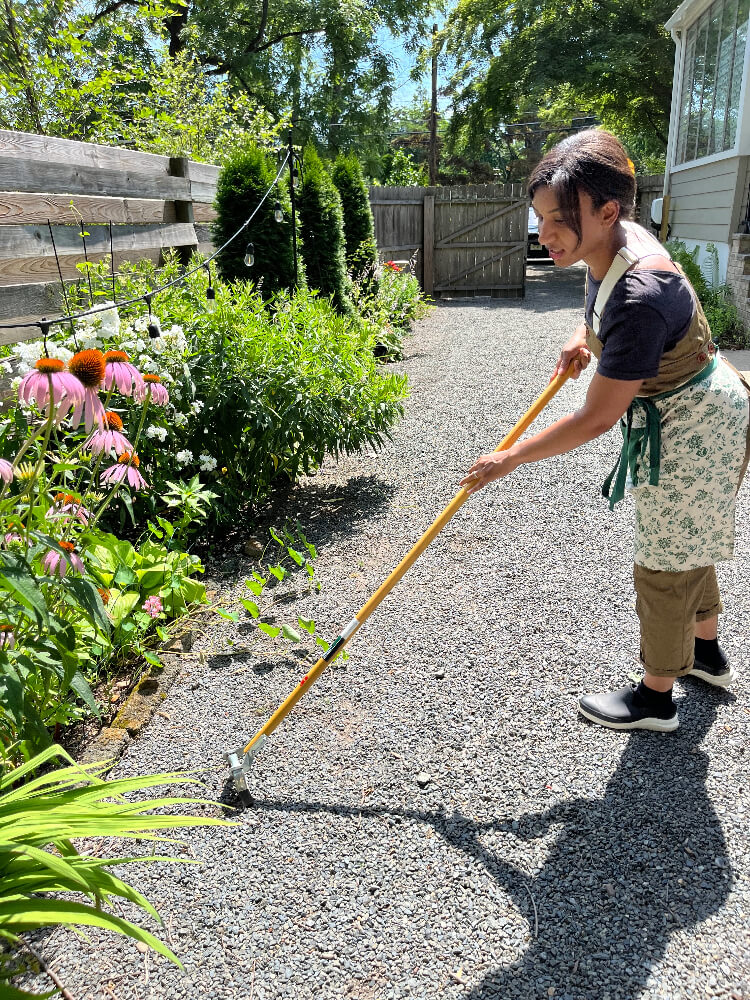
 My other favorite tools are my electric lawn equipment. My husband Bill and I do all of our own landscaping so we need our own equipment. I love the electric mower because I don’t have to deal with gas, oil changes, or storing combustible materials in my shed. It’s also quieter than a gas mower and doesn’t emit pollution.
My other favorite tools are my electric lawn equipment. My husband Bill and I do all of our own landscaping so we need our own equipment. I love the electric mower because I don’t have to deal with gas, oil changes, or storing combustible materials in my shed. It’s also quieter than a gas mower and doesn’t emit pollution.I also have two electric leaf blowers, which save me so much time. One has a setting to reverse the direction, so it vacuums and mulches the leaves into a bag. I pour the mulched leaves into the flower bed so it can break down into leaf mold, which enhances the soil. I also use the leaf blower to evenly distribute grass clipping after mowing. The clippings act as fertilizer for the grass.
How much time do you spend on garden maintenance?
For the lawn, I spend about 30 minutes a week mowing, edging, and spreading the grass clippings over the lawn evenly so it can break down and provide fertilizer. In the summer I cut it infrequently, probably every 2 or 3 weeks. Learn more about Jess’ lawn-care routine (.PDF) if you are interested in avoiding pesticides, and training your lawn to use less water.
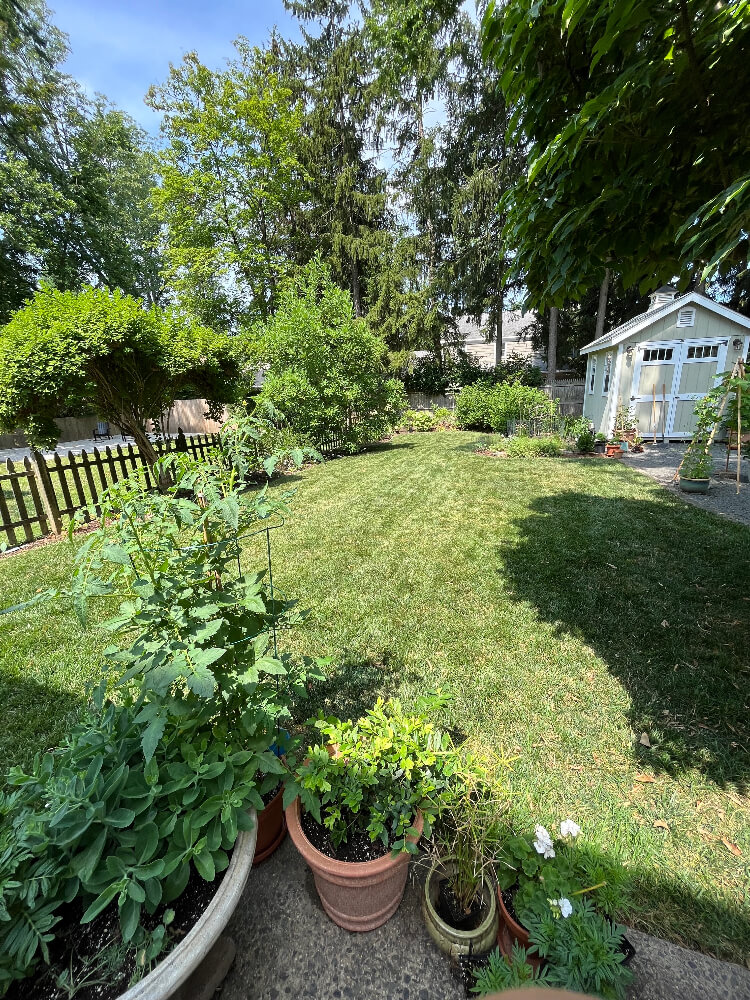
For the rest of the plants, I love being out there, so I spend about an hour a day tending to seedlings, pruning, dead-heading flowers, cleaning up yard debris, planting, checking for pests like lantern flies, or blasting off aphids with a hose.
What would you say to someone who doesn’t have a lot of time to spend gardening?
Right now, I have more work than usual because I grew a lot of plants from seeds and I have a lot of young nursery plants that need extra attention. You don’t have to spend that much time on your garden, but I love it, so I go out in the yard every day.
The amount of time you spend gardening depends on the types of plants you have and the amount of variety. I have a lot of different plants, and they all need different care. To keep track of my tasks, I started keeping a calendar on the fridge where I write reminders for when to prune, water, fertilize, etc. If you don’t keep a calendar, just take a stroll through your yard a couple times a week, and you’ll spot things that need attention.
What’s your favorite gardening “hack”?
I have three hacks! One of my favorite things is mail ordering plants. You can find a lot of varieties, especially native plants that are hard to find in garden centers, like dwarf crested iris, david phlox, swamp milkweed, and mountain pachysandra. Since mail-order plants are smaller or bare root, I find they’re more affordable, which is helpful when you’re starting from scratch like me. The plants I’ve received have been surprisingly healthy; I’ve never had a bad experience. I still buy a lot of plants at local garden centers, but mail ordering is great for hard-to-find plants.
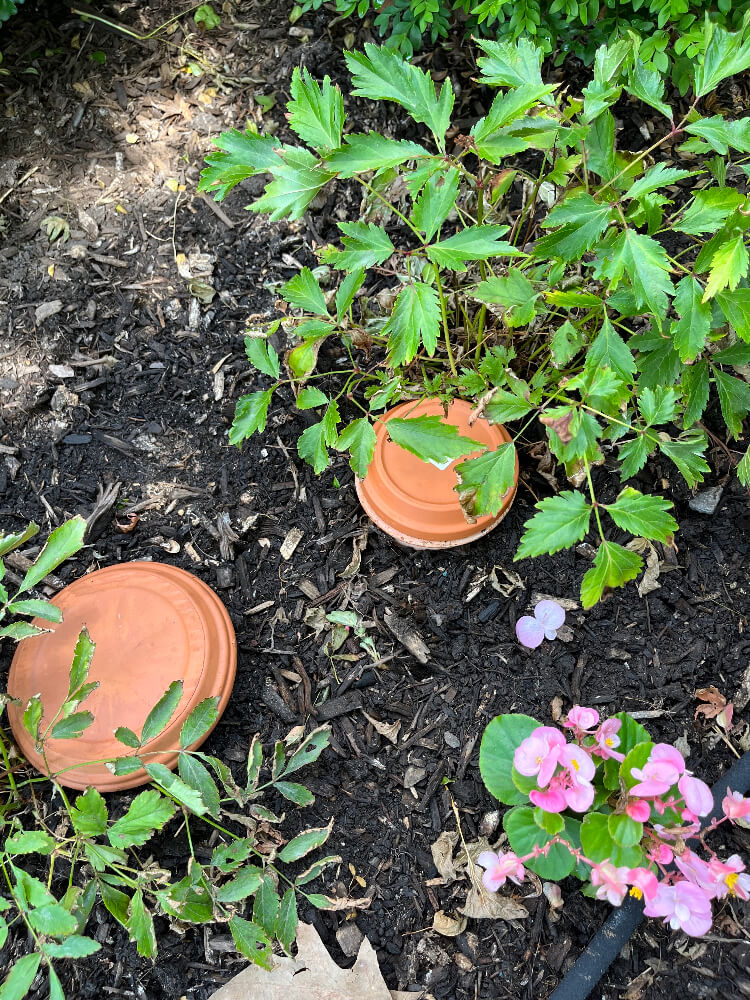
My second hack would be to try in-ground irrigation with a terracotta pot, which delivers water directly to the plant roots. I’m trying it for the first time with two brand new astilbe that are struggling because of the recent heatwave. It’s really easy. I plugged the hole in the bottom of a small unglazed terracotta pot, buried it right next to the plant, filled it with water, and used the saucer as a lid on the top to protect it from mosquitoes. The water seeps out of the sides of the pot directly into the soil near the roots. So far it seems to be working. I found out about this method from the book, Gardening with Less Water by David A Bainbridge.
A third and final hack: You can fill up your garden by dividing your perennials. All of my hostas came from a couple of hostas that I divided and moved around the garden. I use various divisions to fill empty spaces until I can buy other perennials. It’s expensive to buy a lot of plants to fill all of my space at once, so I use this to supplement my budget. If you divide perennials, you can even swap them with neighbors. Before you do it, be careful to check for pests and make sure the plants you receive aren’t invasive before planting them.
What challenges have you experienced during your gardening journey and what advice do you have for others?
My biggest challenges are dealing with invasive insects and volunteer plants that come from seeds distributed by birds. Plants like vinca, and English Ivy, honeysuckle, etc pop up uninvited in the garden all of the time. Unfortunately, I’ve also discovered lantern flies and jumping worms a couple of weeks ago. I’m very careful, but they still reached my garden. Sadly, this means I won’t be swapping any plants anymore since I don’t want to spread them. Pulling seedlings and hunting down pests adds extra work to my gardening routine, but so far it’s manageable. The problem would be worse if I didn’t catch it early, luckily I’m in the yard frequently.
In terms of advice, I’d say enjoy the process of learning, experimentation, and change. I’ve learned so much by just trying things! You don’t need to be an expert to garden. I certainly don’t know everything, but I use resources like Google, YouTube, books, and gardening magazines to get the knowledge I need. For example, when I see a problem with one of my plants, I google a description of the issue, then look through the images until I find a match. Then I can identify it and look for a solution. If that fails, I call the Rutgers Master Gardeners or send them an email. They give great advice!
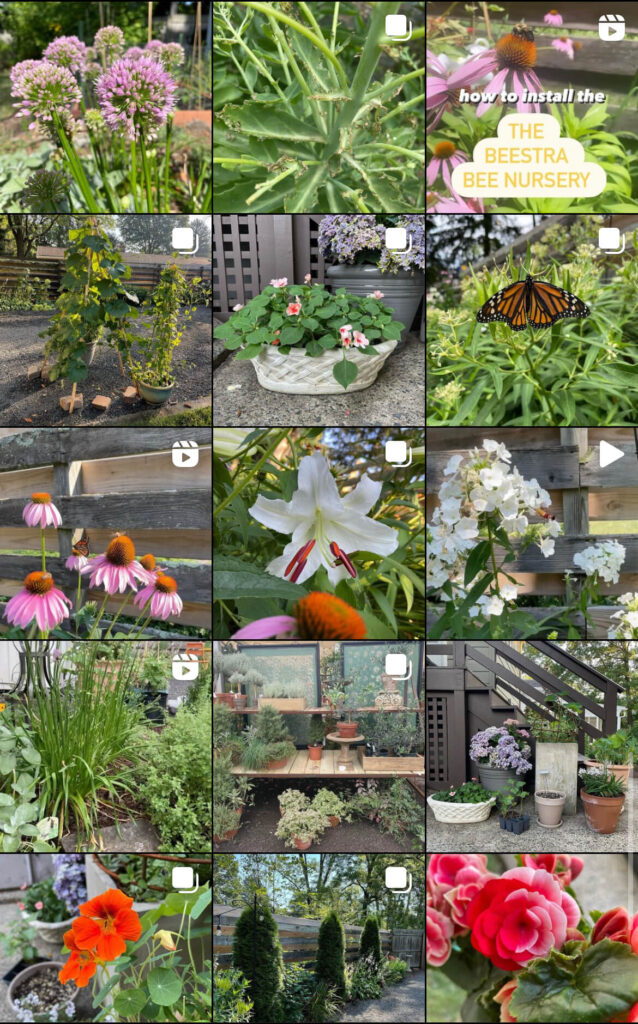
I’d also say try to be patient, although I’m very garden impatient myself. My garden still doesn’t look the way I want it to, although it’s improved a lot. I remind myself it’s constantly evolving and plants take time to mature. In the end that’s actually a good thing because it allows me to continue enjoying gardening as a hobby. Documenting it with photos really helps. It changes so gradually that it’s hard to see how much things have grown. I started my instagram account @princetongardening as a garden diary to keep track of the progress. I definitely recommend taking tons of photos to take a step back and see how it has changed.
What advice do you have for homeowners who hire landscapers?
If you want a lawn like I do, adjust your lawn care to be more eco-friendly. It was my goal to have beautiful grass without emissions, general pesticides, or daily irrigation. I trained my lawn to look lush and green most of the year with almost no watering, and researched simple changes that make a big difference. For example, soil aeration and intermittent deep watering for newly planted grass seeds promote long roots that are more drought tolerant.
You can also use the way you mow to be more sustainable. Ask your landscaper to cut your lawn at about 3.5 or 4 inches, and avoid cutting the grass when it’s wet or very hot outside. Tall grass shades out weeds naturally and cutting it short in a heat wave will make it more likely to turn brown. And if it looks bad, you may feel tempted to water it unnecessarily. Tips like these actually gave me a better lawn and reduced my water and chemical usage. Sustainability doesn’t have to be a sacrifice, and you can still have a traditional look without the traditional chemical and water overload.
What additional resources would you recommend to others?
Gardening with Less Water by David A Bainbridge
- Where I learned about the terracotta pot trick.
Gardening Your Front Yard – projects and ideas for big and small spaces – Tara Nolan
- Has a lot of cool DIY projects in it. Different stylish things you can do to fill your garden beds or creatively add more plantings to your yard.
Both books are available at the Princeton Public library
Let’s Argue About Plants This is my favorite podcast! It profiles interesting plants and they often feature cool native varieties I’ve never heard of.
I also recommend magazines like Fine Gardening and Gardeners’ World because they feature timely gardening advice. Gardeners’ World is from the UK, but they both offer a lot of great sustainability tips and projects, including how to start pollinator containers or tips like saving the nursery pots to reuse them (I save them and grow seeds in them now, it saves me money and keeps plastic out of the landfill).
This interview was edited for clarity and length.
For more sustainable yard tips, visit the yard section of our website.




